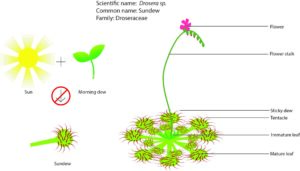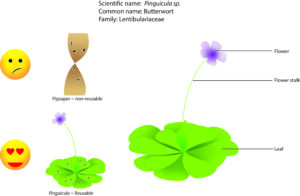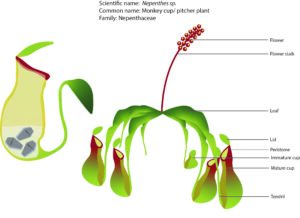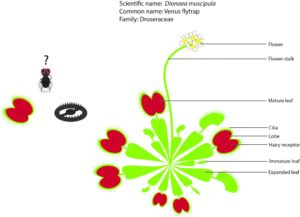
Drosera, not the morning dew but sundew
Sundews (Drosera sp.) are probably the most diverse genus of carnivorous plants in the world which consisting of around two hundred species. Commonly known as sundew because the word, Drosera in Greek means dewy. The “dew” found on the hair of sundew exhibit mini-rainbows whenever they are struck by sunlight. They can be found in Canada, Alaska, Siberia, Europe, Nother America, Brazil, Queensland, southernmost regions of New Zealand, and South America. It occurs on almost […]
Read More
Pinguicula – the flypaper
Pinguicula sp. under the family of Lentibulariaceae, commonly known as butterwort, and means the little greasy one in Latin. It consists of about 50 species. It is greasy due to the slimy, sticky, and greasy touch of the leaves. “Ping” is not sticking to the common impression of carnivorous plants. They do not have the capability of killing large insects or small mammals with specialized and colorful leaves that differentiated into sophisticated traps. Pinguicula is […]
Read More
Nepenthes – not your “cup” of tea
If you think about a cup in nature, what comes to your mind? The monkey cup is a good call, as a carnivorous plant, scientifically referred to as Nepenthes sp., it is unique because of its modified cup-shaped leaf that looks like a small vase with a lid. Some people use the cup as a container to cook sticky rice added with coconut. Travelers often use older pitchers as water scoops or to catch rainwater. […]
Read More
Venus flytrap – don’t fall into the “trap”!
Venus flytrap (Dionaea muscipula) is the most exciting and popular among all carnivorous plants as it has modified leaves as snap traps. It is under the family of Droseraceae and the only species in its genus. Venus flytraps are native only to the coastal plain of southeastern North Carolina and extreme northeastern South Carolina. It can be found the area with unfavorable conditions such as peaty and acidic soil mostly low nutrient availability in damp […]
Read More